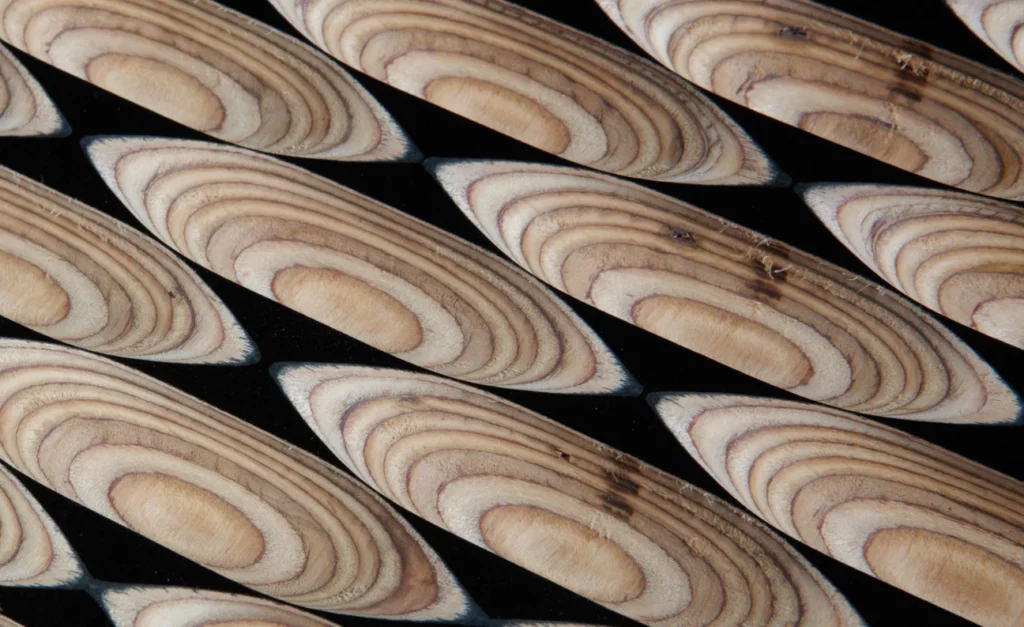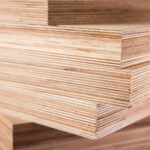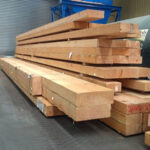When it comes to plywood, there are various grades to choose from, each offering different characteristics and suitability for different projects. Two popular grades in the market are F14 and F17 plywood. Understanding the differences between them can help you make an informed decision for your next woodworking or construction project. In this article, we will delve into the defining qualities of F14 and F17 plywood, highlight their key differences, discuss when to use each grade, address safety considerations, and look at maintenance and longevity factors.
Understanding Plywood Grades
Before diving into the specifics of F14 and F17 plywood, it’s crucial to have a basic understanding of plywood grades. Plywood is graded based on the quality and appearance of its outer veneers. The grading scale typically ranges from A to D, with A being the highest quality and D being the lowest. Additionally, some grades have an additional letter designation, indicating whether the plywood is suitable for exterior use.
Furthermore, F14 plywood is often sought after for its versatility. Beyond furniture and cabinetry, it is also used in high-end millwork, musical instruments, and other decorative applications where a flawless finish is desired. The superior quality of F14 plywood not only enhances the visual appeal of the final product but also ensures long-lasting performance.
When selecting plywood for a project, it’s essential to consider not only the grade but also the type of adhesive used in its construction. Plywood can be categorized based on the adhesive bonding the layers together. For example, Exterior grade plywood is bonded with waterproof glue, making it suitable for outdoor applications where moisture resistance is crucial. On the other hand, Interior grade plywood is bonded with a less water-resistant adhesive, making it more suitable for indoor use.
Defining F14 Plywood
F14 plywood is a high-quality grade commonly used for construction and structural purposes. It typically features a smooth surface and an attractive face veneer. The “F” in F14 stands for “Furniture.” It indicates that this grade of plywood is suitable for projects where appearance matters, such as furniture making or cabinetry. The number 14 denotes that the face veneers are of the highest quality, making F14 plywood a premium choice.

Defining F17 Plywood
On the other hand, F17 plywood is specifically designed for structural applications. The “F” in F17 stands for “Formwork,” indicating that this grade is primarily used for concrete formwork or other similar load-bearing purposes. While F17 plywood may not boast the same visual appeal as F14, it offers excellent strength and durability, making it a go-to option for projects where appearance matters less than structural integrity.
Due to its robust nature, F17 plywood is commonly used in construction projects such as beams, columns, and bracing elements where structural stability is paramount. Its ability to withstand heavy loads and resist bending makes it a reliable choice for applications where safety and strength are top priorities.
Key Differences Between F14 and F17 Plywood
When choosing between F14 and F17 plywood, several factors come into play. Let’s explore the main points of differentiation.
Material Composition
Both F14 and F17 plywood consist of multiple layers or plies of thin wood veneer glued together. However, the specific wood species used and the thickness of the veneers may vary. F14 plywood often features high-quality hardwood face veneers, while F17 plywood tends to utilize softwood face veneers. The core layers of the two grades may also differ slightly.
It’s important to note that the choice of material composition can significantly impact the performance and appearance of the plywood. Hardwood face veneers, as seen in F14 plywood, offer a luxurious and polished look, making them ideal for projects where aesthetics play a crucial role. On the other hand, softwood face veneers, commonly found in F17 plywood, provide strength and stability, making them suitable for structural applications that require durability.
Strength and Durability
While F14 plywood excels in appearance, it may not match the strength and durability offered by F17 plywood. F17 plywood undergoes rigorous testing to ensure its load-bearing capabilities, making it a reliable choice for structural applications. On the other hand, F14 plywood holds up well in non-structural projects where aesthetics take precedence. Read more about durability on https://www.engr.psu.edu/ce/courses/ce584/concrete/library/materials/aggregate/durability.htm
When considering strength and durability, it’s essential to evaluate the specific requirements of your project. If structural integrity is paramount, opting for F17 plywood can provide peace of mind knowing that it has been designed to withstand heavy loads and harsh conditions. Conversely, if your project focuses more on visual appeal and design, F14 plywood can offer a sophisticated finish without compromising on quality.
Cost Differences
Due to the difference in quality and intended usage, F14 plywood is generally more expensive than F17 plywood. Consider your project requirements and budget constraints before making your selection.
Choosing the Right Plywood for Your Project
Now that you understand the defining characteristics and differences between F14 and F17 plywood, let’s discuss when each grade is the most suitable option.
Before diving into the specifics of F14 and F17 plywood, it’s essential to mention that there are various other plywood grades available in the market, each with its unique properties and uses. From the economical CDX plywood commonly used in construction to the marine-grade plywood designed for water-resistant applications, the world of plywood offers a vast array of options to cater to different project requirements.
Click here to read more.
When to Use F14 Plywood
F14 plywood is ideal for projects where appearance matters. If you are working on furniture, cabinetry, or any other project that requires a high-quality finish, F14 plywood is the way to go. Its smooth surface and attractive face veneer will enhance the overall aesthetics of your project.
Furthermore, F14 plywood is often chosen for interior applications where aesthetics play a significant role. Its ability to take stains and finishes well makes it a popular choice among woodworkers and craftsmen looking to achieve a polished and refined look for their creations.
When to Use F17 Plywood
When structural integrity is your top priority, F17 plywood is the grade to choose. Its strength, durability, and load-bearing capabilities make it perfect for applications where the plywood will bear heavy loads, such as concrete formwork or structural support in buildings.
In addition to its structural benefits, F17 plywood is also known for its resistance to warping and twisting, making it a reliable choice for outdoor projects exposed to varying weather conditions. Whether you’re building a deck, a shed, or any outdoor structure, F17 plywood provides the stability and longevity required to withstand the elements. Click here to read more about weather.
Safety Considerations for Using F14 and F17 Plywood
When working with any plywood grade, it’s essential to prioritize safety. Here are some key safety considerations to keep in mind:
Before diving into the details of working with F14 and F17 plywood, it’s important to understand the significance of these grades. F14 plywood is known for its high quality and strength, making it suitable for structural applications where durability is key. On the other hand, F17 plywood is specifically designed for use in marine environments due to its superior resistance to moisture and humidity.
Handling and Storage
Plywood sheets can be heavy, so exercise caution when lifting or moving them to avoid strain or injury. It’s recommended to have assistance when handling large plywood sheets to ensure safe maneuvering. Additionally, store your plywood in a dry, well-ventilated area to prevent warping or moisture damage, which can compromise the integrity of the material.
Moreover, when working with F14 and F17 plywood, it’s crucial to inspect the sheets for any defects or damage before use. Any compromised areas can weaken the overall structure and should be addressed or replaced to maintain the strength and safety of the project.
Cutting and Installation
When cutting plywood, wear appropriate safety gear, such as goggles and gloves, to protect yourself from flying debris. It’s also advisable to work in a well-lit area with stable footing to ensure precision and safety during cutting. Follow proper cutting techniques and use the right tools for the job to achieve clean and accurate cuts without splintering or tear out.
During installation, ensure the plywood is securely fastened according to the recommended specifications provided by the manufacturer. Proper fastening not only ensures structural stability but also reduces the risk of accidents or failures due to inadequate support. Additionally, consider the environmental factors that may impact the performance of F14 and F17 plywood, such as temperature fluctuations or exposure to moisture, and take necessary precautions to safeguard the integrity of the material.
Maintenance and Longevity of F14 and F17 Plywood
To maximize the lifespan of your plywood and ensure its longevity, consider the following maintenance tips:
Protecting Your Plywood
Both F14 and F17 plywood benefit from protective measures to safeguard against moisture damage. Applying a weather-resistant coating, such as sealant or paint, can help enhance the plywood’s resistance to water and prolong its lifespan.
Another crucial aspect of protecting your plywood is ensuring proper ventilation. Adequate airflow around the plywood can prevent moisture buildup, reducing the risk of mold or rot. Consider elevating the plywood slightly off the ground or using spacers to promote air circulation underneath.

Lifespan and Replacement
The lifespan of F14 and F17 plywood will depend on various factors, including the environmental conditions they are exposed to and the level of maintenance they receive. Regularly inspect your plywood for any signs of wear or damage, and replace it as needed to maintain structural integrity.
Additionally, proper handling and storage of plywood can contribute to its longevity. Store plywood in a dry, well-ventilated area away from direct sunlight and extreme temperatures. Avoid placing heavy objects on top of the plywood to prevent warping or bending over time.
In conclusion, when deciding between F14 and F17 plywood, consider your project requirements, including desired appearance, strength, and budget. F14 plywood is an excellent choice for projects where aesthetics are crucial, while F17 plywood offers superior strength for structural applications. Adhering to safety considerations and proper maintenance practices will ensure your plywood remains in good condition and performs as intended. Whether you prioritize beauty or brawn, make an informed decision based on your unique project needs.





